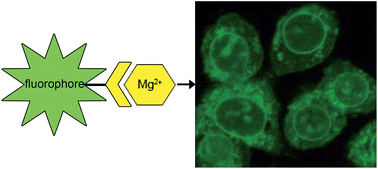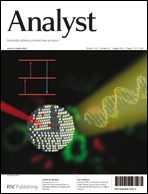Intracellularmagnesium detection: imaging a brighter future
Abstract
A wide variety of biochemical reactions and physiological functions are known to require magnesium; nonetheless, its regulatory mechanisms (both at the cellular and systemic level) are still poorly characterised. Derangement of

- This article is part of the themed collection: Highlighting analytical science in France, Italy and Spain

 Please wait while we load your content...
Please wait while we load your content...